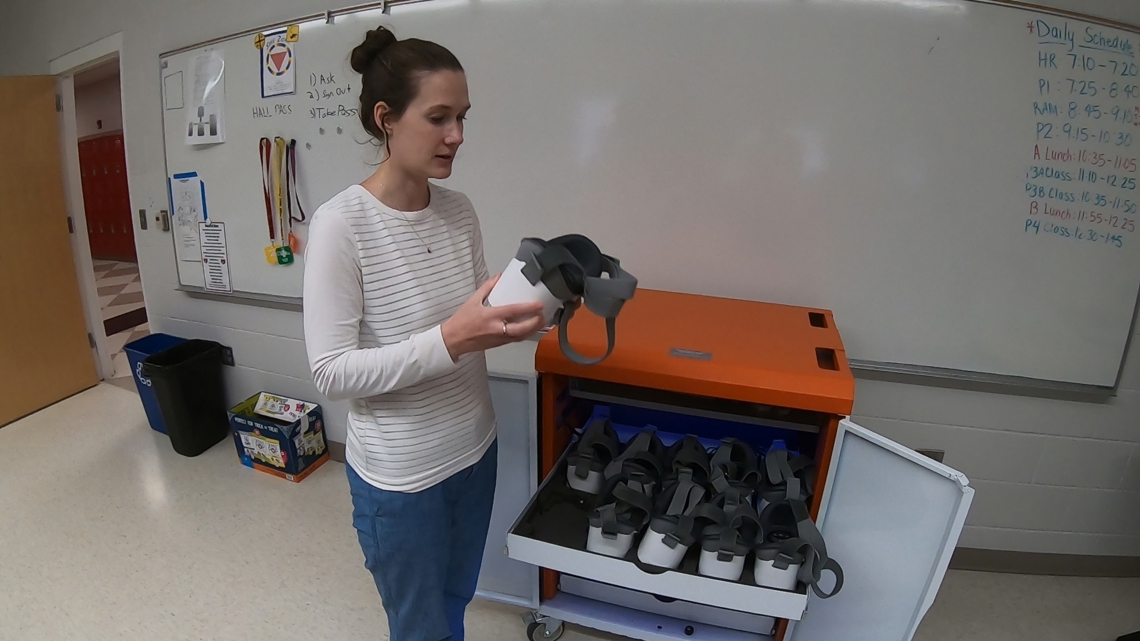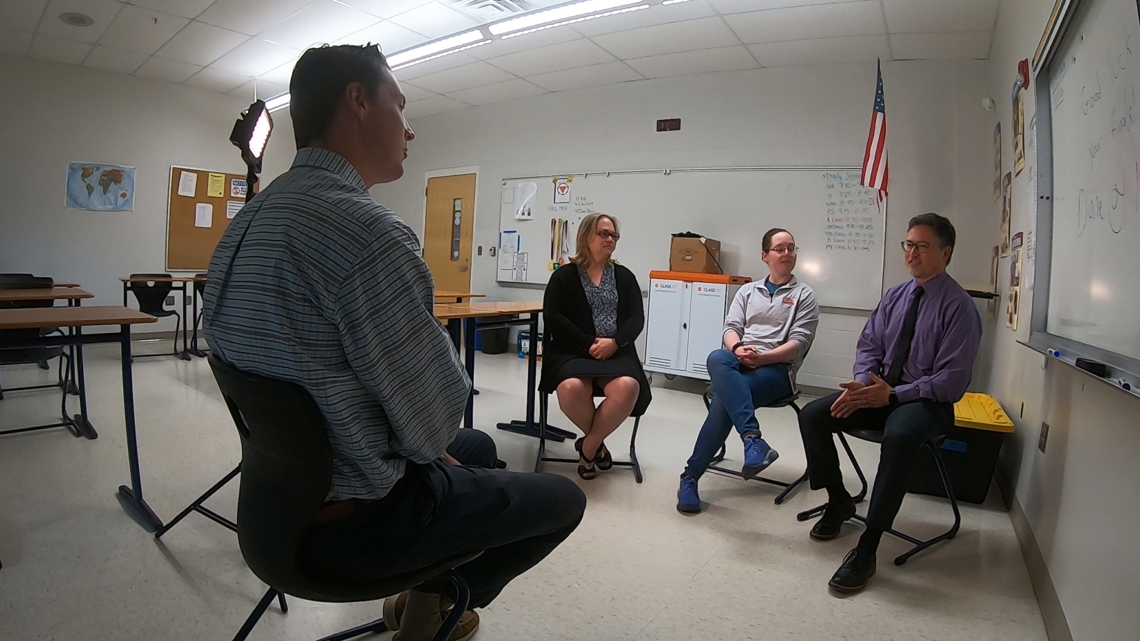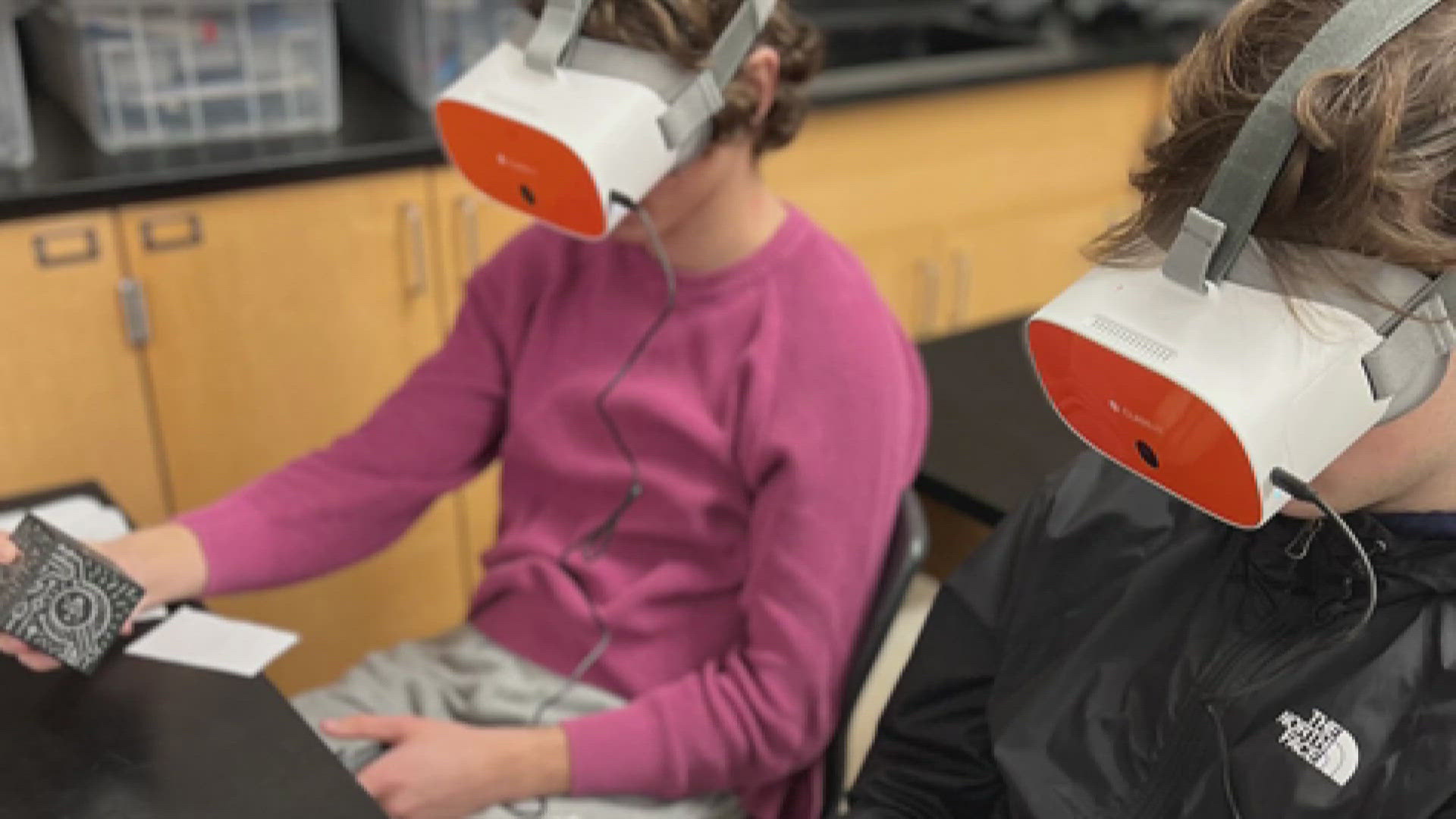AUGUSTA, Maine — Regardless of when you went to school, it was always an exciting day in class when your teacher would roll in the latest technology.
For some, it was a movie projector, for others it was the "laptop cart" to explore the internet.
Students in 2024 are now getting their hands on the latest technology: virtual reality.
Katelyn Rodriquez said she had a goal of brining VR technology to the classroom for years. When she became the director of technology integration for Augusta Schools, she immediately applied to the Department of Education's "Teach With Tech" grant and was awarded 30 VR headsets for students to use.
The headsets are from the company "Class VR," which offers hundreds of different learning modules. Teachers are also able to upload their own videos or pictures for students to explore.
“So we’re able to kind of pick and choose from that [platform] and pull it into what we call a playlist and send it out to all the devices that are hooked up to it," Rodriquez said. “We are able to kind of control not only what it being viewed in the headset but where students are going, so, I feel very safe and secure on that side of things.”
The technology has been embraced by newer teachers at Cony High School, and teachers like Deborah Backman, who has been teaching in Augusta for more than 25 years.
Backman, the German language teacher at Cony, said she wanted to experiment with virtual reality when she saw it in action during an in-person class trip to Germany last summer.
The timing worked out, because Rodriguez had already acquired the headsets.
“It’s one thing to talk about the culture, it’s another thing for [students] to see it, experience it for themselves," Backman said. “It's really inspiring, the depth of knowledge they put in [the lessons] and the creativity and imagination.”
The technology has been a game changer for Backman, who said it used to be nearly impossible to find updated material for her students and it could also be expensive.
Her class also used the technology to meet students at a partner school in Germany to interact in real-time.
Rodriquez said the VR learning took off around Cony this year and was utilized by teachers and students in a wide range of subjects.


Steve Scoville teaches STEM and Honors Physics classes. His students used the VR headsets to explore 3D models and used fun lessons, like exploring space, as a way to relate the lessons back to what they're learning in class.
“Alright now let’s calculate the earth’s radius compared to mars’ radius, and they’re like OK, I can get into that now," he said.
The technology was well received by students in Kathryn Meucci's social studies and world history classes. She said it provided a "deeper level" of learning as students could actually see the structures and monuments they talk about when learning about ancient civilizations.
“And to actually see [those structures] and actually see how they’ve been standing for 500 years, once again helps them learn on a deeper level, like when I say they were good engineers, this is what I mean," Meucci added.
Rodriquez said she hopes more teachers in other schools in the district take advantage of the technology and she added that students came up to her this year asking for more lesson plans and other ways to explore virtual reality.


These teachers said the new learning method makes their job easier, gets the students excited about the lessons, and can help them as they continue their education in the future.
“I think having the kids exposed to it early on makes them start thinking about, 'Oh, this is a possibility for me making something or me having a career,'" Scoville added.

